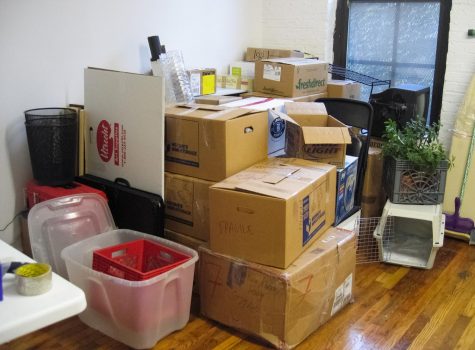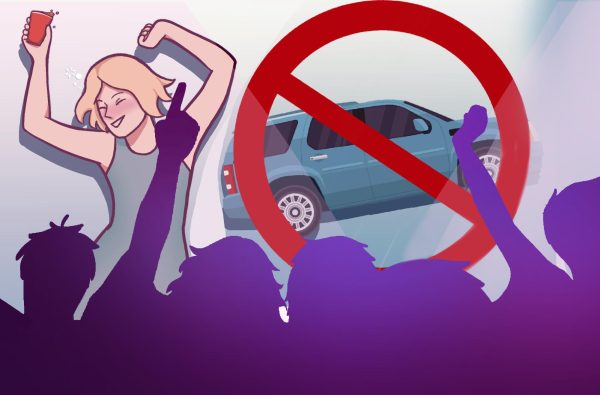Contouring 101
December 7, 2015
Possibly the most popular current beauty trend is contouring, a technique wherein makeup is used to highlight the cheekbones and make the face appear slimmer and angled. Women all around America are obsessed with this trend, and the sales of bronzer, highlighter and blush are through the roof.
Prominent lifestyle figures are divided on the issue, but when done correctly and with enough practice contouring can make you look like a model at the grocery store.
Contouring owes its fame to Kim Kardashian, who began wearing excess amounts of bronzer and highlighter on her cheekbones, jawline, nose, and forehead to make her face appear to have more dimension.
But is this trend too good to be true? After all, contouring is meant to complement the face and make it appear more perfected than it naturally looks. This goal doesn’t sound different from the goal of any other type of makeup technique, yet prominent makeup artists seem to disagree.
Beauty icon Bobbi Brown spoke out about her dislike for contouring in a recent interview with the New York Post. She said contouring usually looks bad when done by non-professionals, going so far as to say it looks like dirt on the face.
This statement may seem harsh, but the more you think about it, the more true it sounds. Unlike eyeshadow and lipstick, where it’s difficult to really mess up, contouring takes beauty design to a whole new level. You are quite literally drawing on your cheekbones; a very prominent part of your face.
I myself am a fan of contouring, and don’t consider my makeup look complete without it. Even with an average-sized face, I feel as though my face is chubbier when I forget to contour.
Another problem with contouring is that people often think it’s always done the same way, when it actually depends on your face shape. Girls with oval-shaped faces have different bone structure than girls with heart-shaped faces; therefore their cheekbones and jawlines are arranged differently. Contouring is meant to highlight these features, but the technique cannot be done the same on everyone.
It’s important to know your face shape, and what looks best for your face. When Bobbi Brown says that non-professionals don’t know how to contour, this is exactly what she means. If you don’t know your face shape, you don’t know how to properly contour it.
Most of us haven’t gone to beauty school and spent countless hours learning how to perfectly apply makeup. But that doesn’t mean that we can’t enjoy the benefits of contouring, too.
I am by no means a beauty guru, and have never been to beauty school. But after contouring my face for more than a year, I have figured out what looks best on myself. It’s more difficult to contour other girls’ faces, because I’m obviously not as familiar with their bone structure or what will best suit their faces. This proves that it all boils down to practice.
I know that I will never be able to contour the way a makeup artist will, even on my own face. But what I do know is that makeup is an art that must be practiced regularly in order to achieve perfection.
Most people don’t have perfect makeup the minute they learn to do it. For proof, look at your yearbooks from middle school; they’re filled with unflattering amounts of foundation and overdrawn eyeliner.
But if you put the time in, contouring can really have its payoffs. It defines your face and gives it angles that you never thought you could have. The key is practice, because no one knows your face like you do.
Alisa Smith is a sophomore communication and political science major from Arlington. She can be contacted at 335-1140 or by [email protected]. The opinions expressed in this column are not necessarily those of the staff of The Daily Evergreen or those of The Office of Student Media.
Possibly the most popular current beauty trend is contouring, a technique wherein makeup is used to highlight the cheekbones and make the face appear slimmer and angled. Women all around America are obsessed with this trend, and the sales of bronzer, highlighter and blush are through the roof.
Prominent lifestyle figures are divided on the issue, but when done correctly and with enough practice contouring can make you look like a model at the grocery store.
Contouring owes its fame to Kim Kardashian, who began wearing excess amounts of bronzer and highlighter on her cheekbones, jawline, nose, and forehead to make her face appear to have more dimension.
But is this trend too good to be true? After all, contouring is meant to complement the face and make it appear more perfected than it naturally looks. This goal doesn’t sound different from the goal of any other type of makeup technique, yet prominent makeup artists seem to disagree.
Beauty icon Bobbi Brown spoke out about her dislike for contouring in a recent interview with the New York Post. She said contouring usually looks bad when done by non-professionals, going so far as to say it looks like dirt on the face.
This statement may seem harsh, but the more you think about it, the more true it sounds. Unlike eyeshadow and lipstick, where it’s difficult to really mess up, contouring takes beauty design to a whole new level. You are quite literally drawing on your cheekbones; a very prominent part of your face.
I myself am a fan of contouring, and don’t consider my makeup look complete without it. Even with an average-sized face, I feel as though my face is chubbier when I forget to contour.
Another problem with contouring is that people often think it’s always done the same way, when it actually depends on your face shape. Girls with oval-shaped faces have different bone structure than girls with heart-shaped faces; therefore their cheekbones and jawlines are arranged differently. Contouring is meant to highlight these features, but the technique cannot be done the same on everyone.
It’s important to know your face shape, and what looks best for your face. When Bobbi Brown says that non-professionals don’t know how to contour, this is exactly what she means. If you don’t know your face shape, you don’t know how to properly contour it.
Most of us haven’t gone to beauty school and spent countless hours learning how to perfectly apply makeup. But that doesn’t mean that we can’t enjoy the benefits of contouring, too.
I am by no means a beauty guru, and have never been to beauty school. But after contouring my face for over a year, I have figured out what looks best on myself. It’s more difficult to contour other girls’ faces, because I’m obviously not as familiar with their bone structure or what will best suit their faces. This proves that it all boils down to practice.
I know that I will never be able to contour the way a makeup artist will, even on my own face. But what I do know is that makeup is an art that must be practiced regularly in order to achieve perfection.
Most people don’t have perfect makeup the minute they learn to do it. For proof, look at your yearbooks from middle school; they’re filled with unflattering amounts of foundation and overdrawn eyeliner.
But if you put the time in, contouring can really have its payoffs. It defines your face and gives it angles that you never thought you could have. The key is practice, because no one knows your face like you do.




















